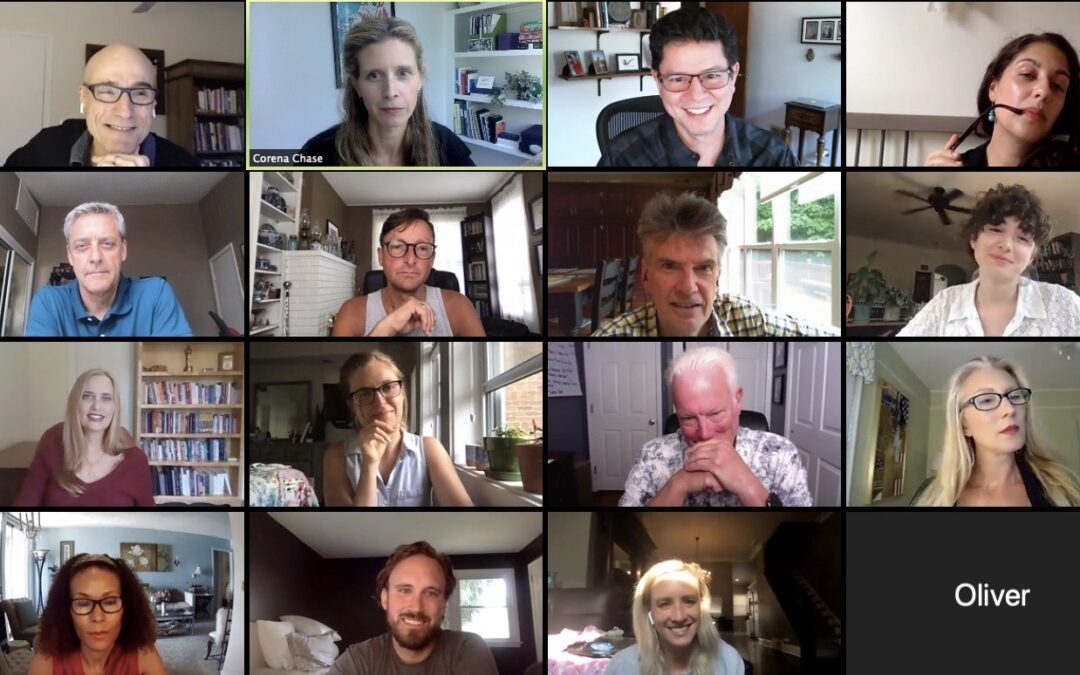In the early days of our transition to everything virtual, I believed the work I do as an executive coach and leadership development facilitator would be undermined. My clients and I usually met in conference rooms and classrooms where we created connection and built our essential trust. The necessary introspection and vulnerability of coaching and learning requires emotional intelligence from me and my clients. We’d read each other’s non-verbal cues and do the subtle work of creating a safe shared space. “How oh, how,” I said, “can this possibly be translated to a computer screen?”
What I have learned, quite simply, is that it can. This is a lesson many of us are learning, despite our “zoom fatigue.” There is no doubt that it’s easier and for many including me, preferable, to hold certain conversations, meetings and gatherings in person. In the meantime, gallery mode enables sharing of ideas and a sense of togetherness that has surprised me. I’m mostly seeing the same levels of contribution and engagement I’d expect to see if we were physically together. I have met new people, built new relationships, and feel the same sense of warmth towards them I would if we’d met in-person.
One of the reasons the much reported “zoom fatigue” occurs is because it requires extra focus to achieve the same levels of communication and connection we expect to accomplish in-person. On camera, our attention (or lack thereof) to the speaker is on full display, so we turn up the volume on our attentiveness to others. Our unconscious ability to read body language is forced to gather all our information from the shoulders up. The awareness of our own hesitations and interjections is heightened. Meanwhile, we must contend with the constancy of a close-up image of our thinking and listening faces. I’ve been trying to improve the pained expression that is my thinking face for many years so that close-up has been a bit disheartening for me. It is also where the gift of this situation lies.
Our computer cameras keep us mindful of the details of our encounters. On our own and other’s faces we see everything: reactions, non-reactions, distractedness, disappointment, discomfort. While this can be exhausting, it’s also a remarkable opportunity for anyone working on emotional intelligence, influencing, empathy, coaching and mentoring conversations. Feedback is clear, immediate, and heightened when you and whoever you are trying to impact are on camera. Whatever you need to work on is made clearer for you. Do you have a tendency to interrupt others? Zoom makes it more obvious you’ve taken over. Are you hesitant when you contribute to a conversation? Our virtual platforms may keep you from getting a word in at all. Are you uncomfortable with silence in a feedback or coaching conversation? Those silences will likely feel longer and louder. Do you tend to ramble when you speak? Check out those blank faces staring back at you. Are you a multi-tasker? Notice when you and others are tempted to turn to another task. Could you build engagement in these moments rather than further deteriorating it? Unfocused, unproductive meetings plague every organization I’ve encountered. You can be part of the problem or part of the solution.
A lot of people have resisted scheduling their one-on one conversations with team members. “They just aren’t the same,” they say. Of course not, they are harder! But they are harder partly because on screen there is no hiding from the skills needed to hold thoughtful, crucial conversations. It’s harder because more is required of us to make the conversations feel successful. We must focus more acutely on others, observe their discomfort and our own in the face of certain questions or topics. We must sit in more noticeable silences, actively listen because it will be too obvious if we aren’t, and we must let ourselves be seen, because a camera knows when we are trying to hide. Virtual platforms heighten what is most uncomfortable for us which is a gift because that’s where our work is.
My communication style is “driver”; perceived inefficiencies and non-direct paths towards immediate goals make my insides burn. I have been acutely aware of my driver-ness these last few months, perhaps because I feel more trapped inside the screen where the inefficiency takes place. I find myself exerting extra effort to be the patient, kind person I believe myself to be. But in the same way the camera reveals that my thinking face looks like I just bit into a lemon, the heightened awareness Zoom has generated shows me where my work is.
Like many, I can’t wait to be in a real room with my colleagues and clients again. In the meantime, not only is it possible to achieve meaningful connection and communication virtually, if we lean into what’s most uncomfortable about it for us, we may come back better equipped in our vulnerable areas than before our Covid-driven screen gatherings.

